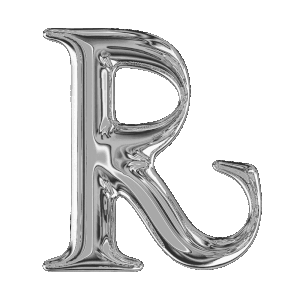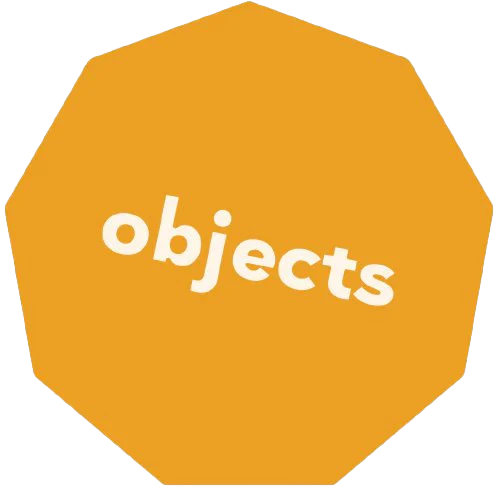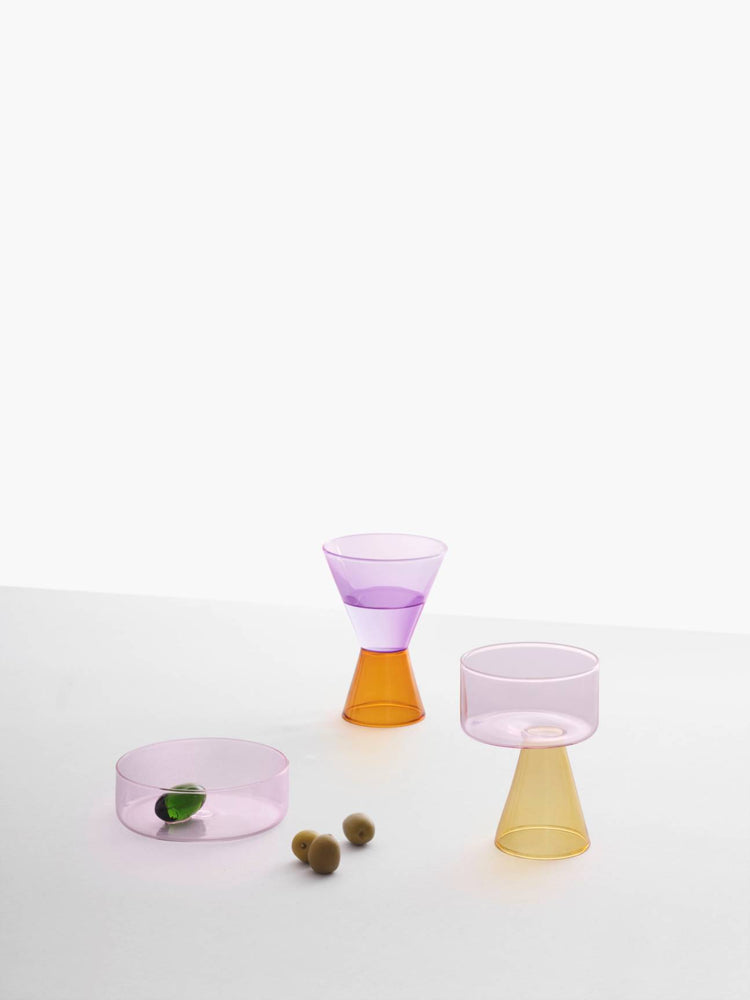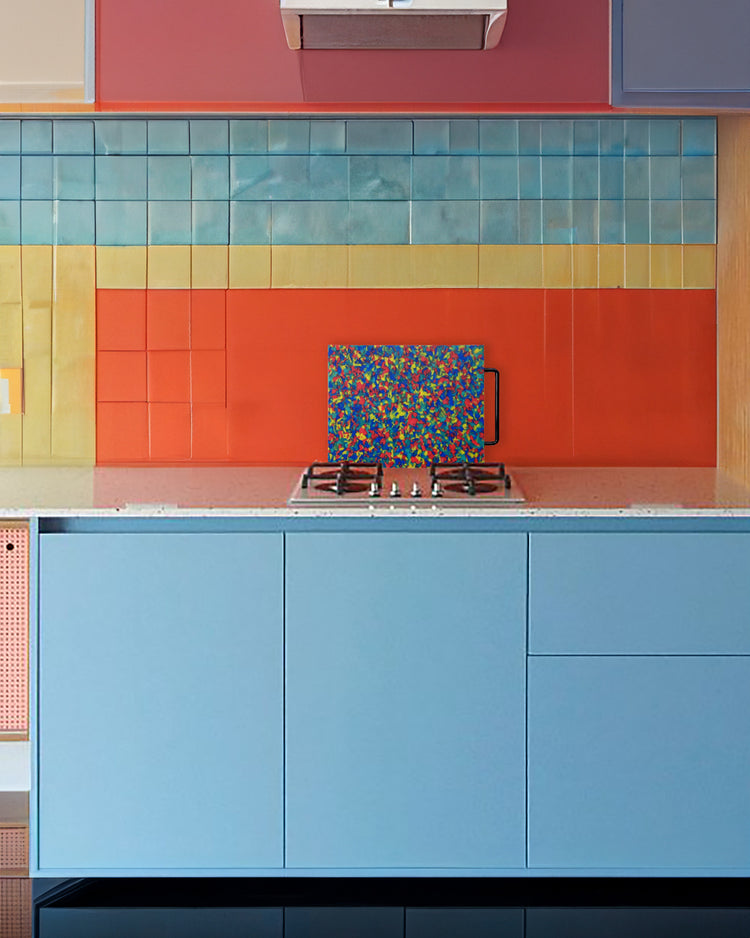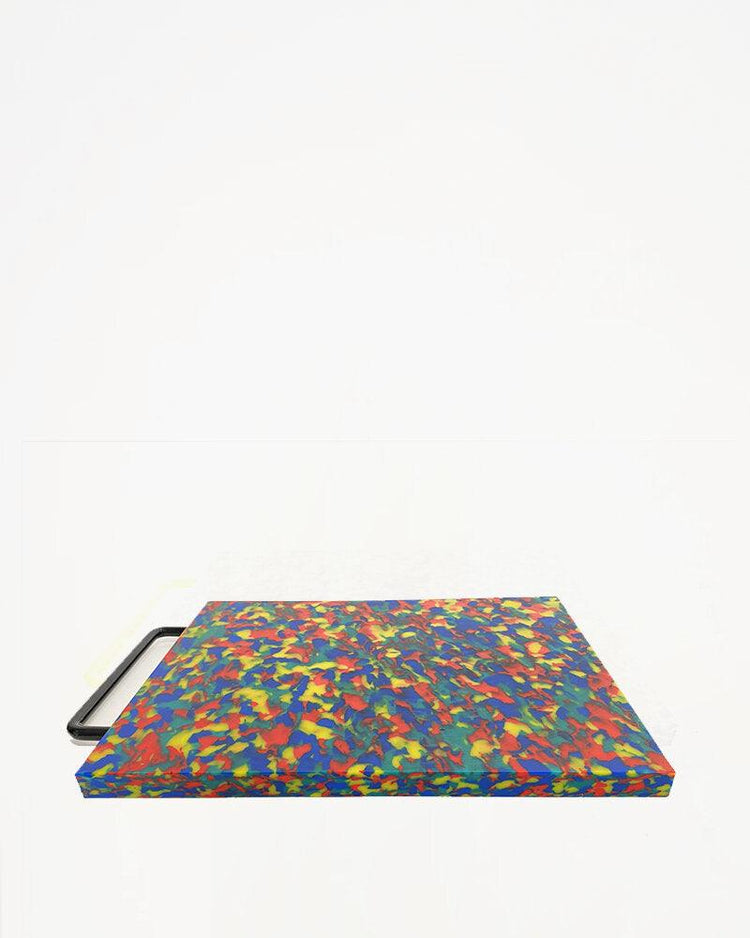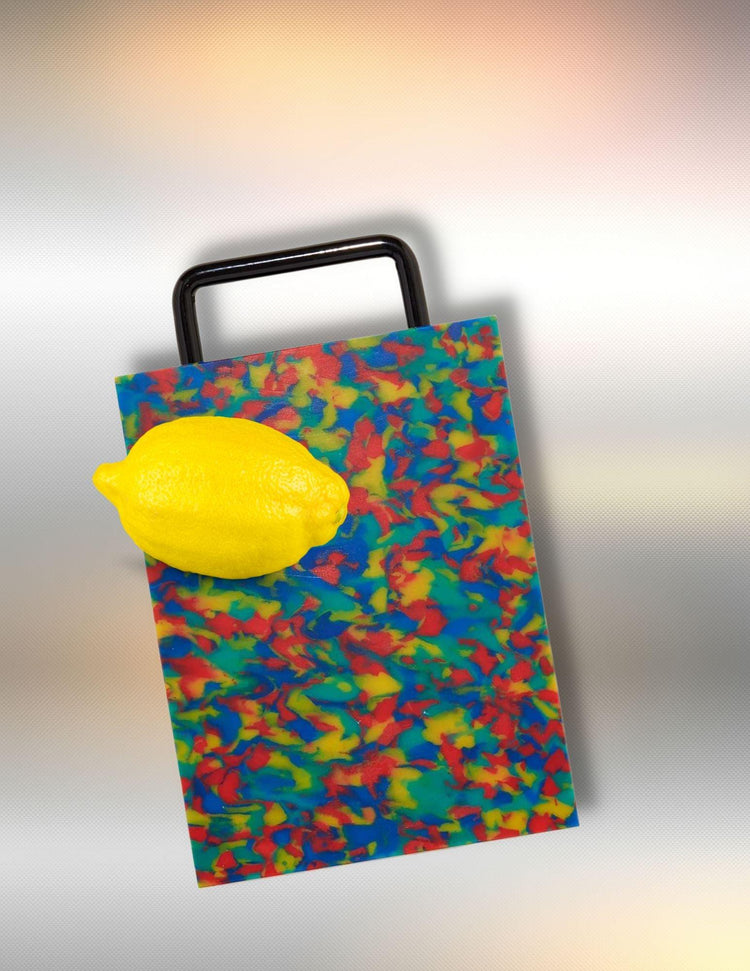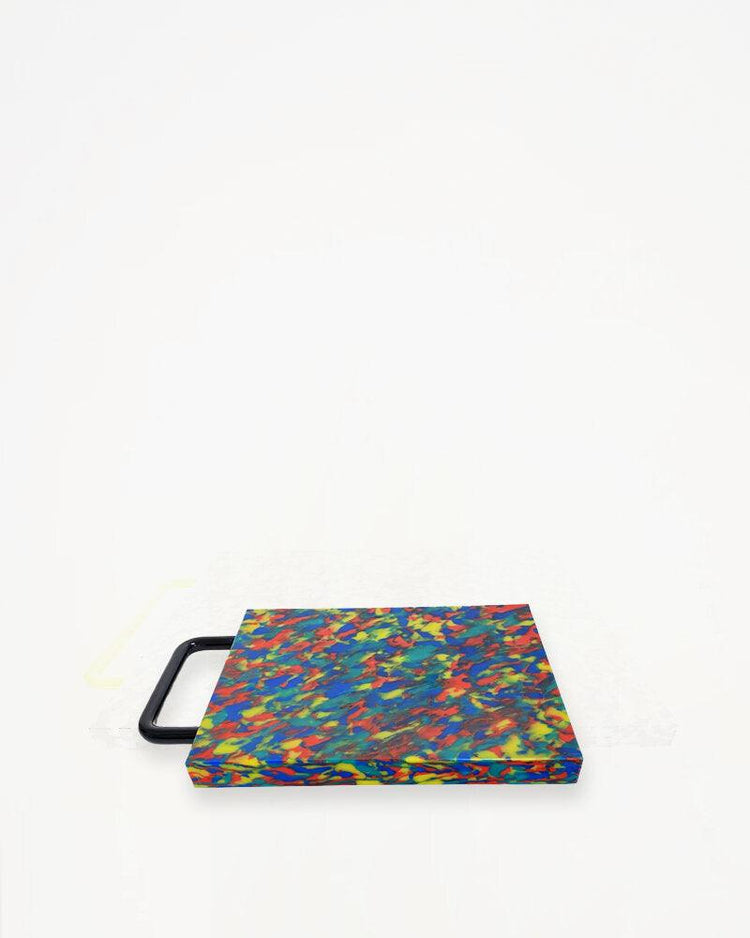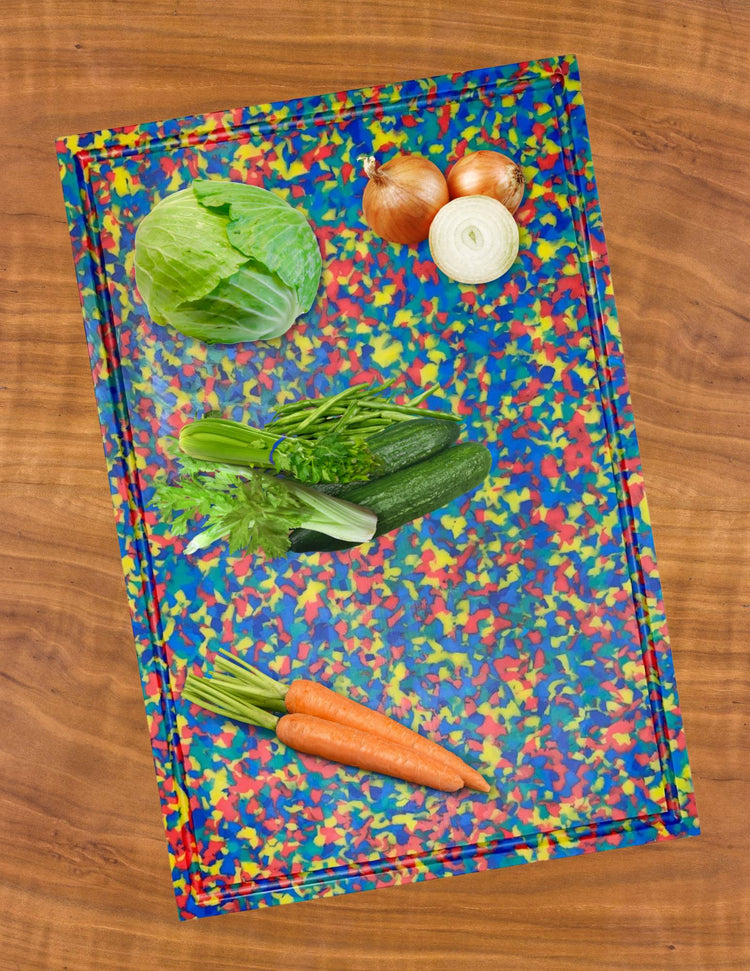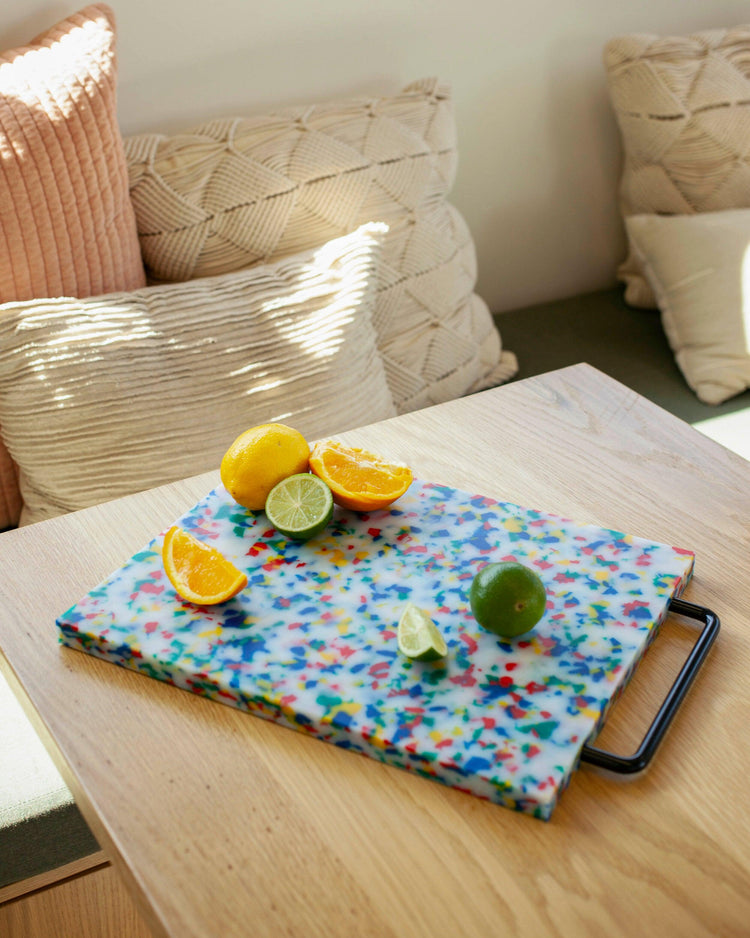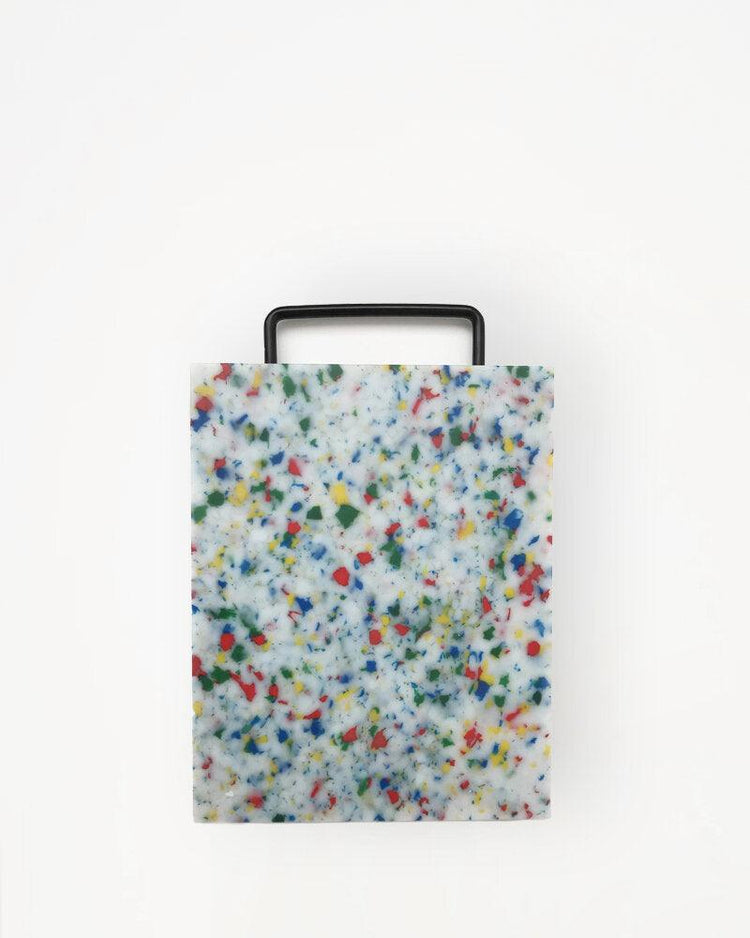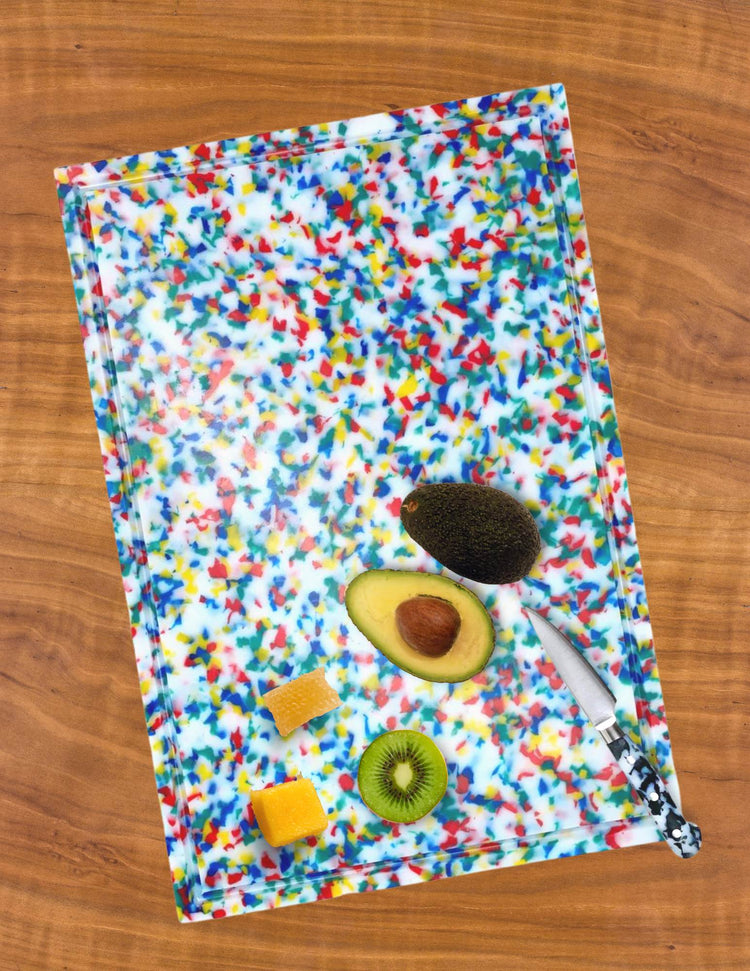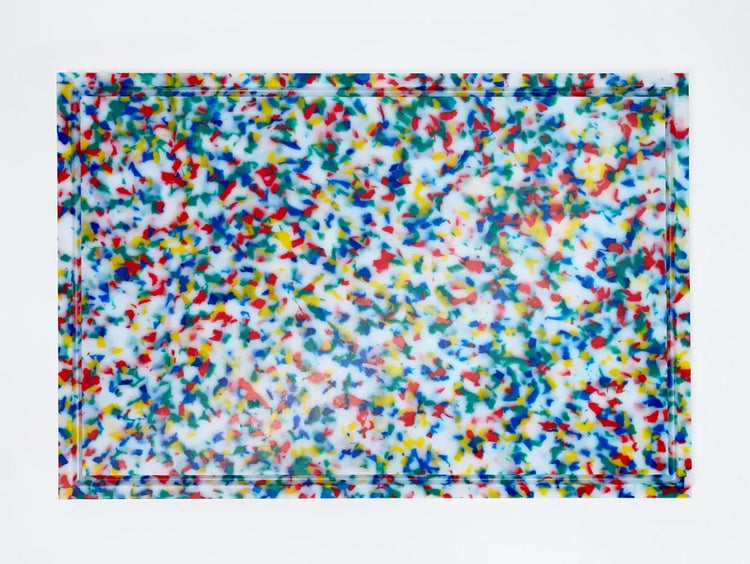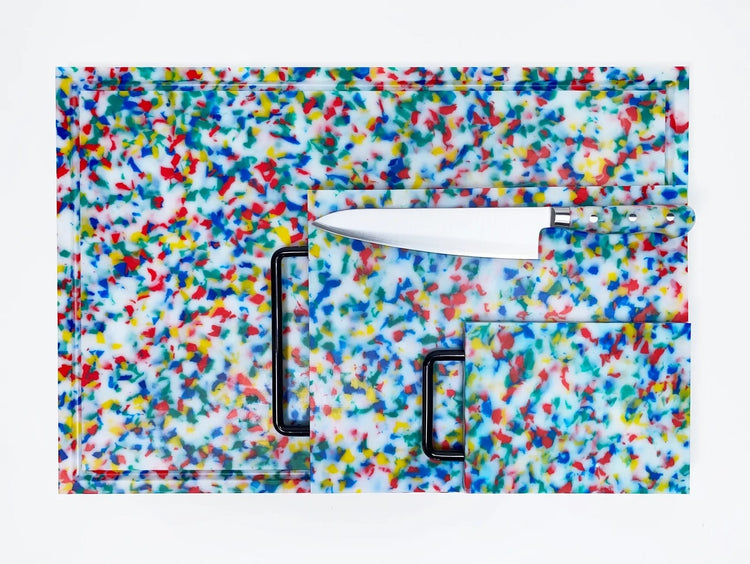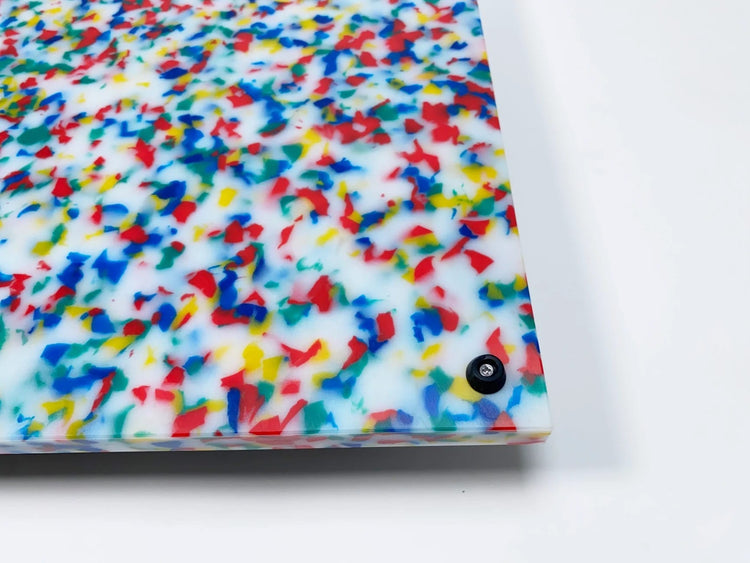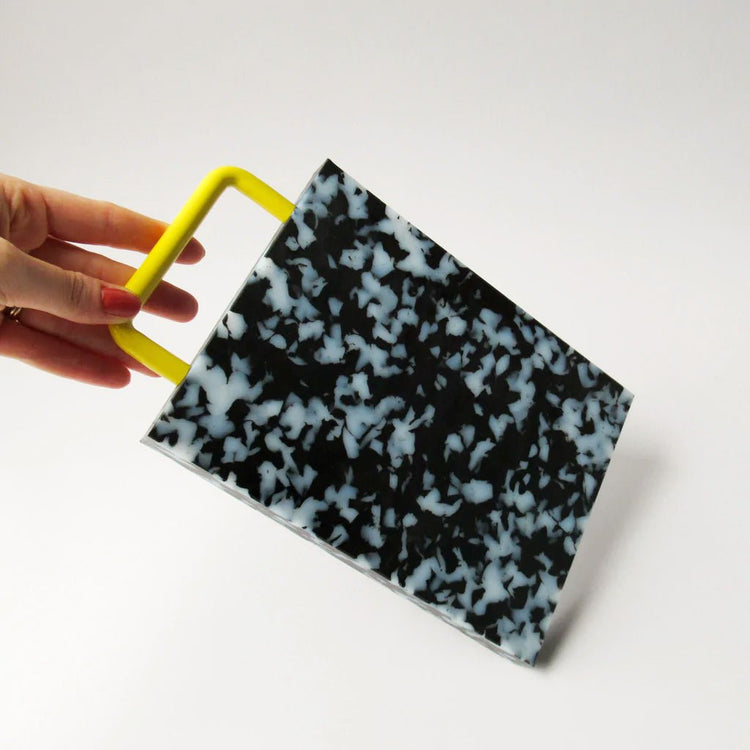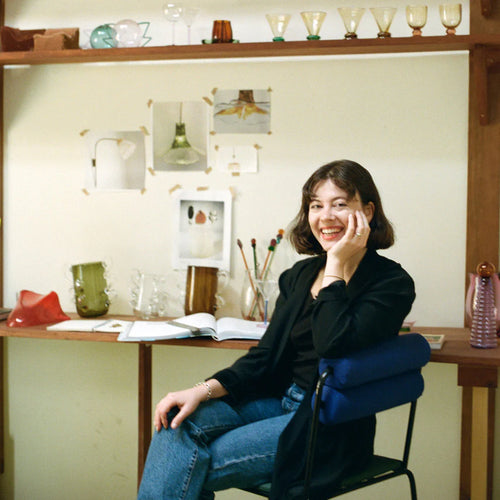
about the designer
Sophie Lou Jacobsen is a French-American designer currently based in New York City. She designs objects, furniture, and spaces. She established her studio two years ago, and since then has been focused primarily on objects of everyday use, mostly using glass as a medium and exploring the interaction between object and user. Her work stems from the idea that objects have an innate power to enhance their user's mood through form and function. She focuses on simple objects and rituals, to see how she can alter these in ways that are surprising, delightful, and elevate the user experience. She believes that the objects which we surround ourselves with can and should be imbued with a certain poetry, creating a relationship between humans and objects built on mutual respect.

about the designer
Sophie Lou Jacobsen is a French-American designer currently based in New York City. She designs objects, furniture, and spaces. She established her studio two years ago, and since then has been focused primarily on objects of everyday use, mostly using glass as a medium and exploring the interaction between object and user. Her work stems from the idea that objects have an innate power to enhance their user's mood through form and function. She focuses on simple objects and rituals, to see how she can alter these in ways that are surprising, delightful, and elevate the user experience. She believes that the objects which we surround ourselves with can and should be imbued with a certain poetry, creating a relationship between humans and objects built on mutual respect.
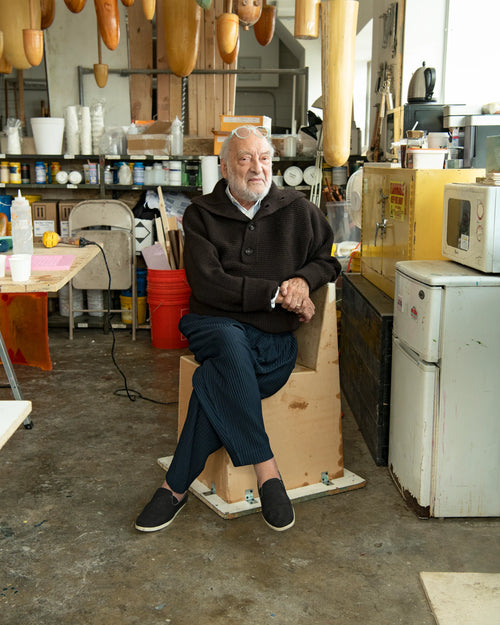
about the designer
Renowned architect, artist, and designer Gaetano Pesce has left an indelible mark in fields ranging from architecture to industrial design since his birth in La Spezia, Italy, in 1939. In the mid-90’s Gaetano Pesce pioneered the use of the resin as material to create design products and the Fish Design adventure began. Celebrated for his innovative use of resin in design, especially with his iconic Fish Design collections, Pesce's work is characterized by a blend of double functionality, vibrant color use, and material perfectionism. His influential pieces, a fixture in major museums worldwide, encapsulate a dynamic career spanning decades and continents, with a significant contribution to design history alongside collaborator Andrea Corsi since the early 2000s

about the designer
Renowned architect, artist, and designer Gaetano Pesce has left an indelible mark in fields ranging from architecture to industrial design since his birth in La Spezia, Italy, in 1939. In the mid-90’s Gaetano Pesce pioneered the use of the resin as material to create design products and the Fish Design adventure began. Celebrated for his innovative use of resin in design, especially with his iconic Fish Design collections, Pesce's work is characterized by a blend of double functionality, vibrant color use, and material perfectionism. His influential pieces, a fixture in major museums worldwide, encapsulate a dynamic career spanning decades and continents, with a significant contribution to design history alongside collaborator Andrea Corsi since the early 2000s
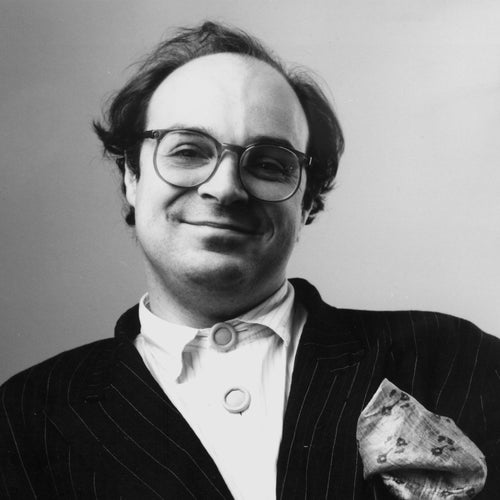
about the designer
Marco Zanini est diplômé en architecture de l'Université de Florence en 1976 et a terminé ses études aux États-Unis. En 1977, il commence à collaborer avec Ettore Sottsass à Milan. Zanini a été l'un des co-fondateurs de Memphis en 1981 et a conçu des œuvres pour toutes les collections. Il conçoit des céramiques, des bijoux, des meubles et des objets en verre soufflé. Fondateur avec Sottsass de Sottsass Associati, il est responsable du design pour de nombreux projets : mobilier de bureau pour des marques renommées, intérieurs résidentiels, intérieurs de showroom, design d'exposition, mobilier urbain et produits industriels pour un large éventail de clients en Italie et à l'étranger. Il travaille comme architecte et designer au Japon, aux États-Unis, en Australie, en Nouvelle-Zélande, en Colombie, au Chili et en Espagne. Ses oeuvres sont présentes dans de nombreux musées et collections privées. Zanini tient de fréquentes conférences sur le design industriel. Aujourd'hui, il vit et travaille à São Paulo, au Brésil.

about the designer
Marco Zanini est diplômé en architecture de l'Université de Florence en 1976 et a terminé ses études aux États-Unis. En 1977, il commence à collaborer avec Ettore Sottsass à Milan. Zanini a été l'un des co-fondateurs de Memphis en 1981 et a conçu des œuvres pour toutes les collections. Il conçoit des céramiques, des bijoux, des meubles et des objets en verre soufflé. Fondateur avec Sottsass de Sottsass Associati, il est responsable du design pour de nombreux projets : mobilier de bureau pour des marques renommées, intérieurs résidentiels, intérieurs de showroom, design d'exposition, mobilier urbain et produits industriels pour un large éventail de clients en Italie et à l'étranger. Il travaille comme architecte et designer au Japon, aux États-Unis, en Australie, en Nouvelle-Zélande, en Colombie, au Chili et en Espagne. Ses oeuvres sont présentes dans de nombreux musées et collections privées. Zanini tient de fréquentes conférences sur le design industriel. Aujourd'hui, il vit et travaille à São Paulo, au Brésil.

about the designer
Sophie Lou Jacobsen is a French-American designer currently based in New York City. She established her studio in 2019, with an initial focus on objects of everyday use, mostly using glass as a medium and exploring the interaction between object and user. Her work stems from the idea that objects have an innate power to enhance their user's mood through form and function. She focuses on simple objects and rituals, to see how she can alter these in ways that are surprising, delightful, and elevate the user experience. She believes that the objects which we surround ourselves with can and should be imbued with a certain poetry, creating a relationship between humans and objects built on mutual respect.

about the designer
Sophie Lou Jacobsen is a French-American designer currently based in New York City. She established her studio in 2019, with an initial focus on objects of everyday use, mostly using glass as a medium and exploring the interaction between object and user. Her work stems from the idea that objects have an innate power to enhance their user's mood through form and function. She focuses on simple objects and rituals, to see how she can alter these in ways that are surprising, delightful, and elevate the user experience. She believes that the objects which we surround ourselves with can and should be imbued with a certain poetry, creating a relationship between humans and objects built on mutual respect.

about the designer
Sophie Lou Jacobsen is a French-American designer currently based in New York City. She established her studio in 2019, with an initial focus on objects of everyday use, mostly using glass as a medium and exploring the interaction between object and user. Her work stems from the idea that objects have an innate power to enhance their user's mood through form and function. She focuses on simple objects and rituals, to see how she can alter these in ways that are surprising, delightful, and elevate the user experience. She believes that the objects which we surround ourselves with can and should be imbued with a certain poetry, creating a relationship between humans and objects built on mutual respect.

about the designer
Sophie Lou Jacobsen is a French-American designer currently based in New York City. She established her studio in 2019, with an initial focus on objects of everyday use, mostly using glass as a medium and exploring the interaction between object and user. Her work stems from the idea that objects have an innate power to enhance their user's mood through form and function. She focuses on simple objects and rituals, to see how she can alter these in ways that are surprising, delightful, and elevate the user experience. She believes that the objects which we surround ourselves with can and should be imbued with a certain poetry, creating a relationship between humans and objects built on mutual respect.
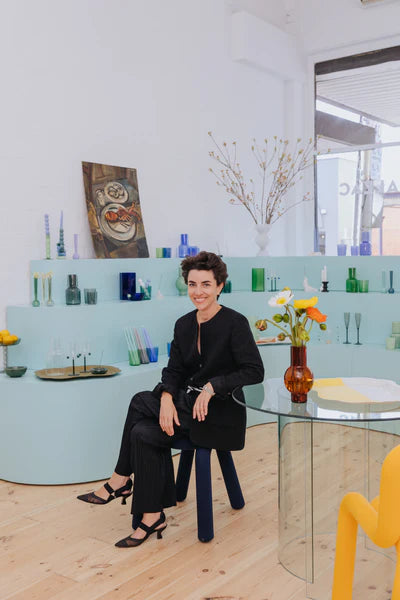
about the designer
Maison Balzac was created in Australia in 2012 by French-born Elise Pioch Balzac to express her endless imagination. What started as a collection of five perfumed candles has become a homeware world of its own, exploring the beauty of hand-blown coloured glassware, trompe l'oeil linen, colourful platters and unusual fragrances. We invent intriguing and playful objects to trigger emotions around the dining table, transforming the everyday act of eating or drinking into quirky, memorable moments.

about the designer
Maison Balzac was created in Australia in 2012 by French-born Elise Pioch Balzac to express her endless imagination. What started as a collection of five perfumed candles has become a homeware world of its own, exploring the beauty of hand-blown coloured glassware, trompe l'oeil linen, colourful platters and unusual fragrances. We invent intriguing and playful objects to trigger emotions around the dining table, transforming the everyday act of eating or drinking into quirky, memorable moments.
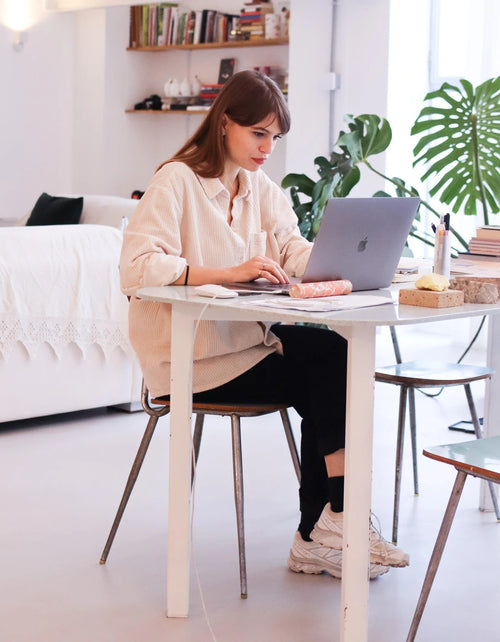
about the designer
Italian designer Astrid Luglio was born in Naples in 1988. She studied at NABA - the New Academy of Fine Arts - in Milan, graduating with a Bachelor’s degree in Product Design. Traveling has been part of her education in fact after the studies, Astrid has lived and worked in Melbourne where she freelanced for local clients, Ho Chi Minh City and Oslo where part of her family lives. Upon returning to Italy, she began working with Milan-based TourDeFork, a design studio inspired by food and culinary culture. In 2018, she founded her own independent studio and started to teach Design of Small Objects to international students at NABA, New Academy of Fine Art in Milan.

about the designer
Italian designer Astrid Luglio was born in Naples in 1988. She studied at NABA - the New Academy of Fine Arts - in Milan, graduating with a Bachelor’s degree in Product Design. Traveling has been part of her education in fact after the studies, Astrid has lived and worked in Melbourne where she freelanced for local clients, Ho Chi Minh City and Oslo where part of her family lives. Upon returning to Italy, she began working with Milan-based TourDeFork, a design studio inspired by food and culinary culture. In 2018, she founded her own independent studio and started to teach Design of Small Objects to international students at NABA, New Academy of Fine Art in Milan.
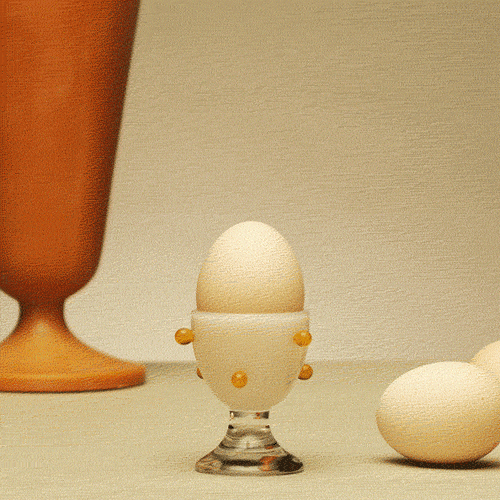
about the designer
Maison Balzac was created in Australia in 2012 by French-born Elise Pioch Balzac to express her endless imagination. What started as a collection of five perfumed candles has become a homeware world of its own, exploring the beauty of hand-blown coloured glassware, trompe l'oeil linen, colourful platters and unusual fragrances. We invent intriguing and playful objects to trigger emotions around the dining table, transforming the everyday act of eating or drinking into quirky, memorable moments.

about the designer
Maison Balzac was created in Australia in 2012 by French-born Elise Pioch Balzac to express her endless imagination. What started as a collection of five perfumed candles has become a homeware world of its own, exploring the beauty of hand-blown coloured glassware, trompe l'oeil linen, colourful platters and unusual fragrances. We invent intriguing and playful objects to trigger emotions around the dining table, transforming the everyday act of eating or drinking into quirky, memorable moments.

about the designer
Fredericks & Mae est un studio de design qui se délecte de l'art du cadeau. Ils s'engagent à mettre au monde des objets qui provoquent des yeux écarquillés, un plaisir inexplicable et des frissons corporels. Un cadeau bien choisi peut être un boulon de connexion - un phare qui nous rappelle nos relations. Ils sont toujours vigilants face à la marchandisation de la joie et aux dangers de l'accumulation matérielle - mais aiment s'entourer de quelques belles choses bien choisies. Chaque manteau est un autel, chaque étagère un sanctuaire, une table basse une collection de choses qui racontent une histoire sur d'où nous venons et où nous voulons aller.

about the designer
Fredericks & Mae est un studio de design qui se délecte de l'art du cadeau. Ils s'engagent à mettre au monde des objets qui provoquent des yeux écarquillés, un plaisir inexplicable et des frissons corporels. Un cadeau bien choisi peut être un boulon de connexion - un phare qui nous rappelle nos relations. Ils sont toujours vigilants face à la marchandisation de la joie et aux dangers de l'accumulation matérielle - mais aiment s'entourer de quelques belles choses bien choisies. Chaque manteau est un autel, chaque étagère un sanctuaire, une table basse une collection de choses qui racontent une histoire sur d'où nous venons et où nous voulons aller.

about the designer
Maison Balzac was created in Australia in 2012 by French-born Elise Pioch Balzac to express her endless imagination. What started as a collection of five perfumed candles has become a homeware world of its own, exploring the beauty of hand-blown coloured glassware, trompe l'oeil linen, colourful platters and unusual fragrances. We invent intriguing and playful objects to trigger emotions around the dining table, transforming the everyday act of eating or drinking into quirky, memorable moments.

about the designer
Maison Balzac was created in Australia in 2012 by French-born Elise Pioch Balzac to express her endless imagination. What started as a collection of five perfumed candles has become a homeware world of its own, exploring the beauty of hand-blown coloured glassware, trompe l'oeil linen, colourful platters and unusual fragrances. We invent intriguing and playful objects to trigger emotions around the dining table, transforming the everyday act of eating or drinking into quirky, memorable moments.

about the designer
Fredericks & Mae est un studio de design qui se délecte de l'art du cadeau. Ils s'engagent à mettre au monde des objets qui provoquent des yeux écarquillés, un plaisir inexplicable et des frissons corporels. Un cadeau bien choisi peut être un boulon de connexion - un phare qui nous rappelle nos relations. Ils sont toujours vigilants face à la marchandisation de la joie et aux dangers de l'accumulation matérielle - mais aiment s'entourer de quelques belles choses bien choisies. Chaque manteau est un autel, chaque étagère un sanctuaire, une table basse une collection de choses qui racontent une histoire sur d'où nous venons et où nous voulons aller.

about the designer
Fredericks & Mae est un studio de design qui se délecte de l'art du cadeau. Ils s'engagent à mettre au monde des objets qui provoquent des yeux écarquillés, un plaisir inexplicable et des frissons corporels. Un cadeau bien choisi peut être un boulon de connexion - un phare qui nous rappelle nos relations. Ils sont toujours vigilants face à la marchandisation de la joie et aux dangers de l'accumulation matérielle - mais aiment s'entourer de quelques belles choses bien choisies. Chaque manteau est un autel, chaque étagère un sanctuaire, une table basse une collection de choses qui racontent une histoire sur d'où nous venons et où nous voulons aller.

about the designer
Fredericks & Mae est un studio de design qui se délecte de l'art du cadeau. Ils s'engagent à mettre au monde des objets qui provoquent des yeux écarquillés, un plaisir inexplicable et des frissons corporels. Un cadeau bien choisi peut être un boulon de connexion - un phare qui nous rappelle nos relations. Ils sont toujours vigilants face à la marchandisation de la joie et aux dangers de l'accumulation matérielle - mais aiment s'entourer de quelques belles choses bien choisies. Chaque manteau est un autel, chaque étagère un sanctuaire, une table basse une collection de choses qui racontent une histoire sur d'où nous venons et où nous voulons aller.

about the designer
Fredericks & Mae est un studio de design qui se délecte de l'art du cadeau. Ils s'engagent à mettre au monde des objets qui provoquent des yeux écarquillés, un plaisir inexplicable et des frissons corporels. Un cadeau bien choisi peut être un boulon de connexion - un phare qui nous rappelle nos relations. Ils sont toujours vigilants face à la marchandisation de la joie et aux dangers de l'accumulation matérielle - mais aiment s'entourer de quelques belles choses bien choisies. Chaque manteau est un autel, chaque étagère un sanctuaire, une table basse une collection de choses qui racontent une histoire sur d'où nous venons et où nous voulons aller.

about the designer
Fredericks & Mae est un studio de design qui se délecte de l'art du cadeau. Ils s'engagent à mettre au monde des objets qui provoquent des yeux écarquillés, un plaisir inexplicable et des frissons corporels. Un cadeau bien choisi peut être un boulon de connexion - un phare qui nous rappelle nos relations. Ils sont toujours vigilants face à la marchandisation de la joie et aux dangers de l'accumulation matérielle - mais aiment s'entourer de quelques belles choses bien choisies. Chaque manteau est un autel, chaque étagère un sanctuaire, une table basse une collection de choses qui racontent une histoire sur d'où nous venons et où nous voulons aller.

about the designer
Fredericks & Mae est un studio de design qui se délecte de l'art du cadeau. Ils s'engagent à mettre au monde des objets qui provoquent des yeux écarquillés, un plaisir inexplicable et des frissons corporels. Un cadeau bien choisi peut être un boulon de connexion - un phare qui nous rappelle nos relations. Ils sont toujours vigilants face à la marchandisation de la joie et aux dangers de l'accumulation matérielle - mais aiment s'entourer de quelques belles choses bien choisies. Chaque manteau est un autel, chaque étagère un sanctuaire, une table basse une collection de choses qui racontent une histoire sur d'où nous venons et où nous voulons aller.

about the designer
Fredericks & Mae est un studio de design qui se délecte de l'art du cadeau. Ils s'engagent à mettre au monde des objets qui provoquent des yeux écarquillés, un plaisir inexplicable et des frissons corporels. Un cadeau bien choisi peut être un boulon de connexion - un phare qui nous rappelle nos relations. Ils sont toujours vigilants face à la marchandisation de la joie et aux dangers de l'accumulation matérielle - mais aiment s'entourer de quelques belles choses bien choisies. Chaque manteau est un autel, chaque étagère un sanctuaire, une table basse une collection de choses qui racontent une histoire sur d'où nous venons et où nous voulons aller.

about the designer
Fredericks & Mae est un studio de design qui se délecte de l'art du cadeau. Ils s'engagent à mettre au monde des objets qui provoquent des yeux écarquillés, un plaisir inexplicable et des frissons corporels. Un cadeau bien choisi peut être un boulon de connexion - un phare qui nous rappelle nos relations. Ils sont toujours vigilants face à la marchandisation de la joie et aux dangers de l'accumulation matérielle - mais aiment s'entourer de quelques belles choses bien choisies. Chaque manteau est un autel, chaque étagère un sanctuaire, une table basse une collection de choses qui racontent une histoire sur d'où nous venons et où nous voulons aller.

about the designer
Fredericks & Mae est un studio de design qui se délecte de l'art du cadeau. Ils s'engagent à mettre au monde des objets qui provoquent des yeux écarquillés, un plaisir inexplicable et des frissons corporels. Un cadeau bien choisi peut être un boulon de connexion - un phare qui nous rappelle nos relations. Ils sont toujours vigilants face à la marchandisation de la joie et aux dangers de l'accumulation matérielle - mais aiment s'entourer de quelques belles choses bien choisies. Chaque manteau est un autel, chaque étagère un sanctuaire, une table basse une collection de choses qui racontent une histoire sur d'où nous venons et où nous voulons aller.

about the designer
Fredericks & Mae est un studio de design qui se délecte de l'art du cadeau. Ils s'engagent à mettre au monde des objets qui provoquent des yeux écarquillés, un plaisir inexplicable et des frissons corporels. Un cadeau bien choisi peut être un boulon de connexion - un phare qui nous rappelle nos relations. Ils sont toujours vigilants face à la marchandisation de la joie et aux dangers de l'accumulation matérielle - mais aiment s'entourer de quelques belles choses bien choisies. Chaque manteau est un autel, chaque étagère un sanctuaire, une table basse une collection de choses qui racontent une histoire sur d'où nous venons et où nous voulons aller.

about the designer
Fredericks & Mae est un studio de design qui se délecte de l'art du cadeau. Ils s'engagent à mettre au monde des objets qui provoquent des yeux écarquillés, un plaisir inexplicable et des frissons corporels. Un cadeau bien choisi peut être un boulon de connexion - un phare qui nous rappelle nos relations. Ils sont toujours vigilants face à la marchandisation de la joie et aux dangers de l'accumulation matérielle - mais aiment s'entourer de quelques belles choses bien choisies. Chaque manteau est un autel, chaque étagère un sanctuaire, une table basse une collection de choses qui racontent une histoire sur d'où nous venons et où nous voulons aller.

about the designer
Fredericks & Mae est un studio de design qui se délecte de l'art du cadeau. Ils s'engagent à mettre au monde des objets qui provoquent des yeux écarquillés, un plaisir inexplicable et des frissons corporels. Un cadeau bien choisi peut être un boulon de connexion - un phare qui nous rappelle nos relations. Ils sont toujours vigilants face à la marchandisation de la joie et aux dangers de l'accumulation matérielle - mais aiment s'entourer de quelques belles choses bien choisies. Chaque manteau est un autel, chaque étagère un sanctuaire, une table basse une collection de choses qui racontent une histoire sur d'où nous venons et où nous voulons aller.

about the designer
Fredericks & Mae est un studio de design qui se délecte de l'art du cadeau. Ils s'engagent à mettre au monde des objets qui provoquent des yeux écarquillés, un plaisir inexplicable et des frissons corporels. Un cadeau bien choisi peut être un boulon de connexion - un phare qui nous rappelle nos relations. Ils sont toujours vigilants face à la marchandisation de la joie et aux dangers de l'accumulation matérielle - mais aiment s'entourer de quelques belles choses bien choisies. Chaque manteau est un autel, chaque étagère un sanctuaire, une table basse une collection de choses qui racontent une histoire sur d'où nous venons et où nous voulons aller.

about the designer
Fredericks & Mae est un studio de design qui se délecte de l'art du cadeau. Ils s'engagent à mettre au monde des objets qui provoquent des yeux écarquillés, un plaisir inexplicable et des frissons corporels. Un cadeau bien choisi peut être un boulon de connexion - un phare qui nous rappelle nos relations. Ils sont toujours vigilants face à la marchandisation de la joie et aux dangers de l'accumulation matérielle - mais aiment s'entourer de quelques belles choses bien choisies. Chaque manteau est un autel, chaque étagère un sanctuaire, une table basse une collection de choses qui racontent une histoire sur d'où nous venons et où nous voulons aller.

about the designer
Fredericks & Mae est un studio de design qui se délecte de l'art du cadeau. Ils s'engagent à mettre au monde des objets qui provoquent des yeux écarquillés, un plaisir inexplicable et des frissons corporels. Un cadeau bien choisi peut être un boulon de connexion - un phare qui nous rappelle nos relations. Ils sont toujours vigilants face à la marchandisation de la joie et aux dangers de l'accumulation matérielle - mais aiment s'entourer de quelques belles choses bien choisies. Chaque manteau est un autel, chaque étagère un sanctuaire, une table basse une collection de choses qui racontent une histoire sur d'où nous venons et où nous voulons aller.

about the designer
Fredericks & Mae est un studio de design qui se délecte de l'art du cadeau. Ils s'engagent à mettre au monde des objets qui provoquent des yeux écarquillés, un plaisir inexplicable et des frissons corporels. Un cadeau bien choisi peut être un boulon de connexion - un phare qui nous rappelle nos relations. Ils sont toujours vigilants face à la marchandisation de la joie et aux dangers de l'accumulation matérielle - mais aiment s'entourer de quelques belles choses bien choisies. Chaque manteau est un autel, chaque étagère un sanctuaire, une table basse une collection de choses qui racontent une histoire sur d'où nous venons et où nous voulons aller.

about the designer
Fredericks & Mae est un studio de design qui se délecte de l'art du cadeau. Ils s'engagent à mettre au monde des objets qui provoquent des yeux écarquillés, un plaisir inexplicable et des frissons corporels. Un cadeau bien choisi peut être un boulon de connexion - un phare qui nous rappelle nos relations. Ils sont toujours vigilants face à la marchandisation de la joie et aux dangers de l'accumulation matérielle - mais aiment s'entourer de quelques belles choses bien choisies. Chaque manteau est un autel, chaque étagère un sanctuaire, une table basse une collection de choses qui racontent une histoire sur d'où nous venons et où nous voulons aller.

about the designer
Fredericks & Mae est un studio de design qui se délecte de l'art du cadeau. Ils s'engagent à mettre au monde des objets qui provoquent des yeux écarquillés, un plaisir inexplicable et des frissons corporels. Un cadeau bien choisi peut être un boulon de connexion - un phare qui nous rappelle nos relations. Ils sont toujours vigilants face à la marchandisation de la joie et aux dangers de l'accumulation matérielle - mais aiment s'entourer de quelques belles choses bien choisies. Chaque manteau est un autel, chaque étagère un sanctuaire, une table basse une collection de choses qui racontent une histoire sur d'où nous venons et où nous voulons aller.
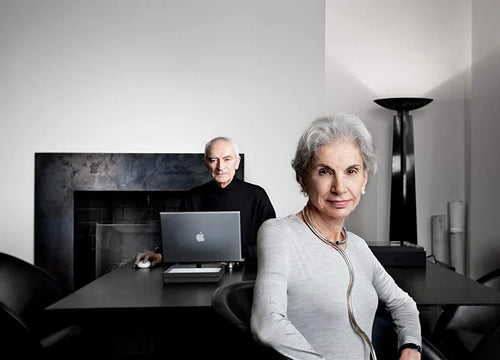
about the designer
Lella and Massimo Vignelli were pivotal figures in the design world, renowned for their clarity and coherence in numerous projects. Massimo started his design journey as a draftsman in Milan, influenced by Adolf Loos’ belief that an architect should design everything from a spoon to a city. Both Lella, born into an architectural family in Udine, and Massimo shared a comprehensive design philosophy, encapsulated in their book "Design is One," emphasizing consistency and timelessness. After their training, they moved to the US, co-founding Unimark International and later starting Vignelli Associates. Their impressive portfolio includes corporate identities for American Airlines and the New York City Transit Authority, as well as graphic design, interiors, furniture, and exhibitions for prestigious institutions. Their legacy is celebrated in museums worldwide, and they were honored with numerous awards, including the National Design Lifetime Achievement award in 2003

about the designer
Lella and Massimo Vignelli were pivotal figures in the design world, renowned for their clarity and coherence in numerous projects. Massimo started his design journey as a draftsman in Milan, influenced by Adolf Loos’ belief that an architect should design everything from a spoon to a city. Both Lella, born into an architectural family in Udine, and Massimo shared a comprehensive design philosophy, encapsulated in their book "Design is One," emphasizing consistency and timelessness. After their training, they moved to the US, co-founding Unimark International and later starting Vignelli Associates. Their impressive portfolio includes corporate identities for American Airlines and the New York City Transit Authority, as well as graphic design, interiors, furniture, and exhibitions for prestigious institutions. Their legacy is celebrated in museums worldwide, and they were honored with numerous awards, including the National Design Lifetime Achievement award in 2003
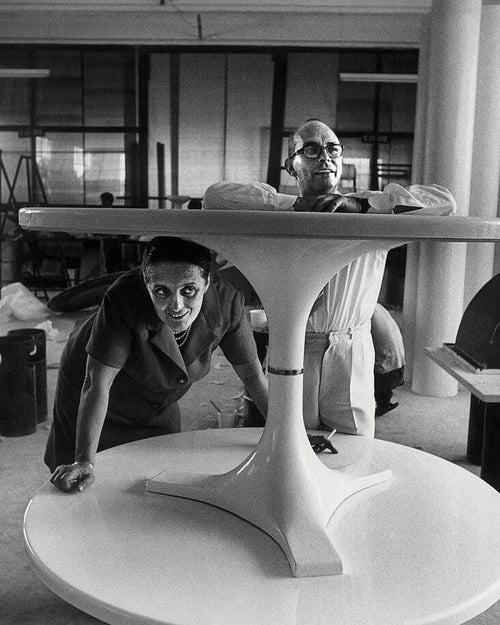
about the designer
Anna Castelli Ferrieri est l'incarnation de la philosophie créative italienne qui prône le design « de la petite cuillère à la ville ». Castelli Ferrieri a contribué à la conception des deux. Castelli Ferrieri a commencé à concevoir pour Kartell en 1966, après avoir été choisi comme architecte de son siège social. Célèbre pour son rôle critique dans l'introduction sur le marché de consommation du plastique en tant que matériau acceptable, Kartell a joué un rôle déterminant dans l'arrivée de designers innovants tels que Joe Colombo, Marco Zanuso avec Richard Sapper et Achille Castiglioni. Dans ses propres créations pour Kartell, Castelli Ferrieri a exploité de nouveaux matériaux à travers des formes innovantes. Pour ses éléments de conteneur "4970/84", Castelli Ferrieri a traité le design comme un mini exercice architectural, avec des unités empilables et interchangeables en fonction des besoins du nouveau style de vie des années 1960. Pour ses créations belles et utiles, Castelli Ferrieri a remporté de nombreux prix de design, dont le prestigieux Compasso d'Oro, mais le fait que la plupart de ses pièces soient toujours en production mérite les plus grands éloges.

about the designer
Anna Castelli Ferrieri est l'incarnation de la philosophie créative italienne qui prône le design « de la petite cuillère à la ville ». Castelli Ferrieri a contribué à la conception des deux. Castelli Ferrieri a commencé à concevoir pour Kartell en 1966, après avoir été choisi comme architecte de son siège social. Célèbre pour son rôle critique dans l'introduction sur le marché de consommation du plastique en tant que matériau acceptable, Kartell a joué un rôle déterminant dans l'arrivée de designers innovants tels que Joe Colombo, Marco Zanuso avec Richard Sapper et Achille Castiglioni. Dans ses propres créations pour Kartell, Castelli Ferrieri a exploité de nouveaux matériaux à travers des formes innovantes. Pour ses éléments de conteneur "4970/84", Castelli Ferrieri a traité le design comme un mini exercice architectural, avec des unités empilables et interchangeables en fonction des besoins du nouveau style de vie des années 1960. Pour ses créations belles et utiles, Castelli Ferrieri a remporté de nombreux prix de design, dont le prestigieux Compasso d'Oro, mais le fait que la plupart de ses pièces soient toujours en production mérite les plus grands éloges.

about the designer
Lella and Massimo Vignelli were pivotal figures in the design world, renowned for their clarity and coherence in numerous projects. Massimo started his design journey as a draftsman in Milan, influenced by Adolf Loos’ belief that an architect should design everything from a spoon to a city. Both Lella, born into an architectural family in Udine, and Massimo shared a comprehensive design philosophy, encapsulated in their book "Design is One," emphasizing consistency and timelessness. After their training, they moved to the US, co-founding Unimark International and later starting Vignelli Associates. Their impressive portfolio includes corporate identities for American Airlines and the New York City Transit Authority, as well as graphic design, interiors, furniture, and exhibitions for prestigious institutions. Their legacy is celebrated in museums worldwide, and they were honored with numerous awards, including the National Design Lifetime Achievement award in 2003

about the designer
Lella and Massimo Vignelli were pivotal figures in the design world, renowned for their clarity and coherence in numerous projects. Massimo started his design journey as a draftsman in Milan, influenced by Adolf Loos’ belief that an architect should design everything from a spoon to a city. Both Lella, born into an architectural family in Udine, and Massimo shared a comprehensive design philosophy, encapsulated in their book "Design is One," emphasizing consistency and timelessness. After their training, they moved to the US, co-founding Unimark International and later starting Vignelli Associates. Their impressive portfolio includes corporate identities for American Airlines and the New York City Transit Authority, as well as graphic design, interiors, furniture, and exhibitions for prestigious institutions. Their legacy is celebrated in museums worldwide, and they were honored with numerous awards, including the National Design Lifetime Achievement award in 2003
